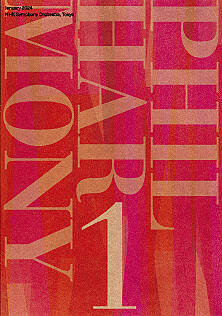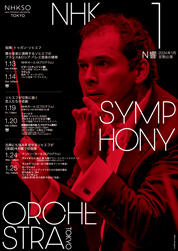- Home
- Concerts
- Subscription Concerts 2023-2024
- Program B
- No. 2003 Subscription (Program B)
No. 2003 Subscription (Program B)
Suntory Hall
Google Map Seating Chart
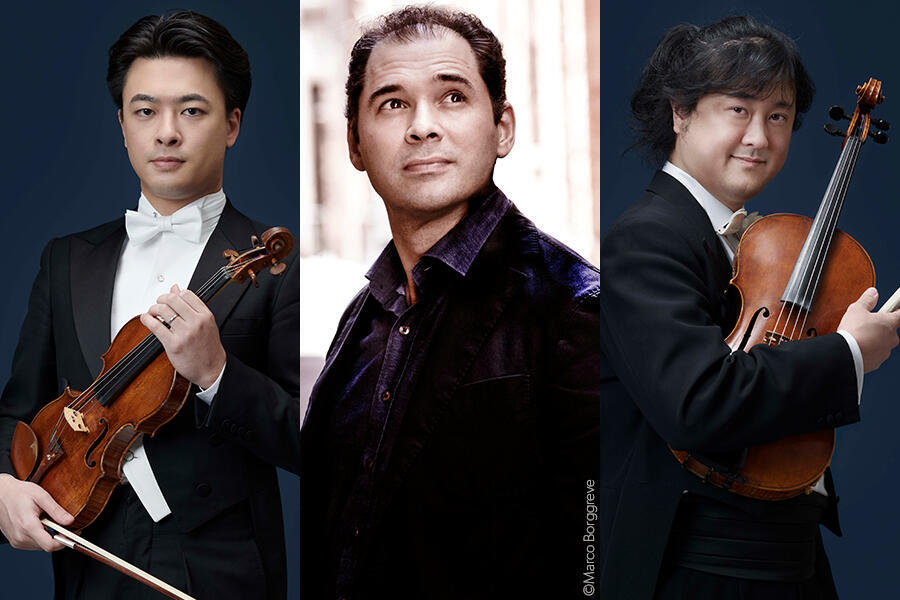
Program
Mozart / Sinfonia Concertante for Violin and Viola E-flat Major K. 364
Requiring plural soloists, the sinfonia concertante is a hybrid form of a solo-instrument concerto and a symphony as its name suggests. Mozart presumably composed K. 364 in 1779 or 1780 in his hometown Salzburg immediately after his artistically fruitful sojourns in Mannheim and Paris, then the foremost musical capitals.
It is unclear for which purpose K. 364 was written, nor by whom it was first performed. Mozart’s father Leopold, incidentally, was an eminent violinist and an authority of violin teaching. As Mozart himself played violin and viola – the latter was particularly his favorite–, he may possibly have imagined the solo parts to be played by Leopold and him. At any rate, he treats the two solo instruments evenly, making the best of their timbral difference. Furthermore, as an exception, he divides the orchestral viola section into two, to thicken the texture.
K. 364 is inspirationally hybrid, too, for the sinfonia concertante as genre was all the rage in Paris when Mozart visited there, while he uses not a few orchestral writing techniques typical of the cutting-edge Mannheim school. The latter’s examples are already found at the start of the first sonata movement: the fanfare-like opening with dotted rhythm and the breathtaking orchestral crescendo (right after horns and oboes introduce the second theme) which prepares the solo parts’ entrance in unison. The poignant second movement in tragic C minor leads to the boundlessly cheerful finale in rondo form excluding any minor-mode episode.
[Kumiko Nishi]
Beethoven / Symphony No. 3 E-flat Major Op. 55, Eroica (Heroic Symphony)
Friend of liberty, Beethoven saw Napoleon Bonaparte as the embodiment of the French Revolution’s ideal. He originally composed the Symphony No. 3 in honor of the First Consul of France. After the completion in 1804, however, the German composer was disappointed at the news of Napoleon declaring himself emperor, and famously erased the title “Bonaparte” as well as the dedication on the manuscript’s title-page. The symphony was eventually published under the title “Sinfonia Eroica (Heroic Symphony), Composed to Celebrate the Memory of a Great Man.” With regard to who is “a Great Man,” experts have mentioned various possibilities including Prince Louis Ferdinand of Prussia (1772–1806) who fought in the French Revolutionary Wars.
This colossal, unconventional work was a big step for Beethoven trying to break from the traditional Classical style. The first movement in E-flat major – the home key of Mozart’s above-mentioned K. 364 – is an extended sonata with an exceptionally long development. The fleeting introduction lets the whole orchestra resound only twice the tonic chord of E-flat major. Immediately after that, the cellos sing the first theme, a simple broken chord, which will be elaborately developed through the entire movement. We then hear, in the place of a mellifluous movement, a grave funeral march in C minor which is the key of, again, K. 364’s slow movement.
Beethoven chose for the third movement a lively scherzo instead of a graceful minuet as he had already done in his Symphony No. 2. The trio (central) section with three horns evoking a hunting scene is a highlight. The truly heroic last movement is also unconventional as it is not a rondo but a set of variations on a theme. The theme given by the pizzicato low strings had been used previously in Beethoven’s Die Geschöpfe des Prometheus (The Creatures of Prometheus) (1801), a ballet about the heroic Greek god who stole the fire from Zeus to give it to mankind, as well as in his Variationen und Fuge für Klavier (Variations and Fugue for Piano) op. 35 (1802) nicknamed Eroica-Variationen (Eroica Variations).
[Kumiko Nishi]
[Encore]
Jan 24: Mozart / Duo for Violin and Viola No.2 B-flat Major K.424 - 3 mvt. Tema con variazioni
Jan 25: Mozart / Duo for Violin and Viola No.2 B-flat Major K.424 - 2 mvt. Andante cantabile
Violin : Sunao Goko
Viola : Junichiro Murakami
Artists
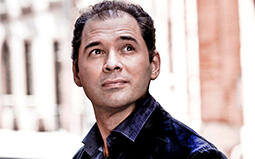 ConductorTugan Sokhiev
ConductorTugan Sokhiev
Born in Vladikavkaz in North Ossetia of the former Soviet Union in 1977, Tugan Sokhiev studied conducting under the legendary tutors Ilya Musin and then Yuri Temirkanov at the St. Petersburg Conservatory. Since 2008, as Music Director of the Orchestre national du Capitole de Toulouse, he has contributed to the development of the orchestra, at the same time, served as Principal Conductor of the Deutsches Symphonie-Orchester Berlin from 2012 to 2016. Furthermore, from 2014, he served as Music Director of the Bolshoi Theatre in Moscow, while making guest appearances with prestigious orchestras and at opera houses, including the Wiener Philharmoniker, the Berliner Philharmoniker and the Royal Concertgebouw Orchestra, thus has actively worked internationally in concerts and operas. In 2022, grieved by the invasion of Ukraine by Russia, his beloved homeland, he resigned from his posts at both the Bolshoi Theatre and the Orchestre national du Capitole de Toulouse, however, even after that he has continued to be in full demand from all over the world. He has been highly evaluated for his accurate sense of style and rich interpretations such as the dynamic scale he introduces to perform Russian works, the sophisticated sense he employs to French repertoire and his full expression in an orthodox approach towards German works. He has returned to the NHK Symphony Orchestra almost every year to present delightful performances. On this visit, he will surely demonstrate his diversity in expression through three programs of French, German and Russian works.
[Motoyuki Teranishi, music critic]
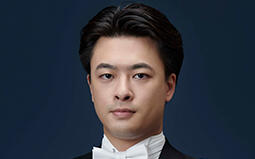 ViolinSunao Goko (Guest Concertmaster, NHKSO)*
ViolinSunao Goko (Guest Concertmaster, NHKSO)*
Sunao Goko, born in 1993, is one of the young generation violinists who gather most attention, and has won 1st prize in the 11th Yehudi Menuhin International Competition for Young Violinists (the youngest winner in the competition's history) in 2006. Since his debut in December 2007, he has worked with leading Japanese orchestras such as the Yomiuri Nippon Symphony Orchestra, the New Japan Philharmonic, and the Osaka Philharmonic, under the batons of such conductors as Gerhard Bosse, Kazuyoshi Akiyama, and Michiyoshi Inoue. He has also been invited by music festivals, including Saito Kinen Orchestra (presently called Seiji Ozawa Matsumoto Festival) and the Spring Festival in Tokyo on a regular basis. In 2013, he won the Tibor Varga International Violin Competition, as well as the Audience Award and Contemporary Music Award. After having served as the assistant concert master of the NHK Symphony Orchestra, he has been Guest Concert Master since April 2023. He plays the 1682 ‘Banat’ Stradivarius.
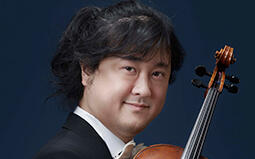 ViolaJunichiro Murakami (Principal Viola, NHKSO)
ViolaJunichiro Murakami (Principal Viola, NHKSO)
After graduating from Toho Gakuen School of Music, he received a Japanese government scholarship on the Cultural Affairs Agency’s program of Overseas Study for Upcoming Artists and went to Italy to study in Florence. He won 1st Prize at the International Competition for Chamber Music Ensembles “Premio Trio di Trieste,” received a gold medal by Carlo Azeglio Ciampi, the president of Italy at the time, and was offered opportunities to appear in about 50 concerts across Italy as well as in European cities. He was the winner of the 2008 International Chamber Music Competition “Premio Vittorio Gui” in Florence. He then moved to Germany from Italy to assume the post of Solo Violist of the WDR Sinfonieorchester Köln while appearing with the Gewandhausorchester Leipzig, the Symphonieorchester des Bayerischen Rundfunks, and the Bamberger Symphoniker as Chief Guest Violist, as well as in music festivals and chamber music concerts as a soloist and chamber musician. He has been Principal Viola of the NHK Symphony Orchestra since October 2021.
*Changed from initially scheduled.
Download
Ticket
Program B
No. 2003 Subscription (Program B)
Suntory Hall
Google Map
Seating Chart
Single Tickets Release Date
Pre-sales for Subscribers:Thursday, October 26, 2023
*about subscribers
Sale to General Public:Sunday, October 29, 2023
Price
| S | A | B | C | D | |
|---|---|---|---|---|---|
| Ordinary Ticket | 9,800 | 8,400 | 6,700 | 5,400 | 4,400 |
| Youth Ticket | 4,500 | 4,000 | 3,300 | 2,500 | 1,800 |
Seating chart Enlarge Print PDF
*tax included
*Subscribers receive a 10% discount (Available at NHKSO WEB Ticket and N-Kyo Guide)
*For wheelchair-accessible seats, please refer to the N-Kyo Guide
Youth Tickets
Youth Tickets are great options for those of 25 years old and younger
Subscription tickets
Release Date
ANNUAL SUBSCRIPTION TICKETS
Mon., July 17, 2023 10:00am
[For Subscribers: Sun., July 9, 2023 10:00am]
SEASONAL SUBSCRIPTION TICKETS (WINTER)
Tue., Oct. 17, 2023 10:00am
[For Subscribers: Thu., Oct. 12, 2023 10:00am]
Where to buy
NHKSO WEB Ticket | Wednesday, January 24 (In English / Seats not selectable)
NHKSO WEB Ticket | Thursday, January 25 (In English / Seats not selectable)
NHKSO WEB Ticket (In Japanese only / Seats selectable)
N-Kyo Guide (Purchase by telephone only)
*Repertoire, conductor, soloists and program order are subject to change without notice.
*Pre-school children are not allowed in the concert hall

